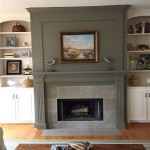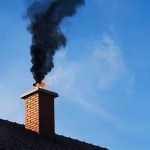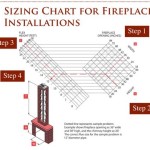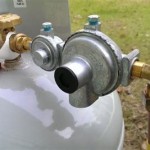Hanging a Flat Screen TV Above a Fireplace: Considerations and Best Practices
Mounting a flat-screen television above a fireplace is a common home design choice, driven by the desire to maximize space and create a centralized entertainment zone. However, this configuration presents a unique set of challenges that require careful consideration to ensure both the safety and longevity of the television, as well as the comfort of viewers. This article will explore the key factors to evaluate before undertaking such a project, addressing thermal considerations, viewing angles, cable management, and structural support.
Thermal Concerns and Mitigation Strategies
The primary concern associated with placing a television above a fireplace is the potential for heat damage. Fireplaces, whether gas or wood-burning, generate significant heat that rises and can directly impact the electronics within the television. Excessive heat can shorten the lifespan of components, such as capacitors and integrated circuits, leading to premature failure and reduced performance. The internal components of a flat-screen television are generally designed to operate within a specific temperature range, and exceeding this range can have detrimental consequences.
The intensity of the heat exposure depends on several factors, including the type of fireplace, the frequency and duration of use, and the presence of a mantle or other form of shielding. A gas fireplace with a sealed firebox typically produces less radiant heat directed upwards compared to a traditional open-hearth wood-burning fireplace. A mantle, properly designed and positioned, can act as a heat deflector, diverting rising heat away from the television. The depth and overhang of the mantle are crucial to its effectiveness.
To mitigate the risk of heat damage, several strategies can be employed. Firstly, assessing the actual temperature above the fireplace is essential. This can be accomplished using a thermometer placed in the intended location of the television. Regular monitoring, especially during fireplace use, will provide valuable data on the temperature profile. If temperatures consistently exceed the manufacturer's recommended operating range for the television, alternative placement options should be considered.
Secondly, a properly designed mantle can significantly reduce heat exposure. The mantle should ideally extend beyond the width of the fireplace opening and have a sufficient overhang to deflect rising heat outwards. The material of the mantle is also important; non-combustible materials like stone or concrete are preferable to wood, which can be susceptible to warping or even ignition over prolonged exposure to high heat.
Thirdly, consider installing a heat shield or heat deflector specifically designed for mounting televisions above fireplaces. These products are typically made of metal and are engineered to redirect heat away from the television. They come in various sizes and styles to accommodate different fireplace and television configurations. Carefully follow the manufacturer's instructions during installation to ensure optimal performance.
Finally, regular maintenance of the fireplace is crucial. Ensure proper ventilation and airflow to minimize the build-up of heat. Clean the fireplace regularly to remove creosote and other debris that can contribute to increased heat output. Consider having a professional chimney sweep inspect and clean the chimney annually to maintain its efficiency and safety.
Optimizing Viewing Angles and Ergonomics
Beyond thermal considerations, the viewing angle and overall ergonomics are critical aspects of mounting a television above a fireplace. The height of the television greatly impacts the comfort of the viewing experience. Placing the television too high can lead to neck strain and fatigue, particularly during extended viewing sessions. The ideal viewing angle is typically considered to be at or slightly below eye level when seated in the primary viewing position.
The distance from the seating area to the television also plays a role in determining the optimal viewing height. A general guideline is that the further the viewing distance, the higher the television can be mounted without causing significant neck strain. However, even at greater distances, excessive height should be avoided. Use online calculators and ergonomic guidelines to help determine the ideal viewing height based on your specific room dimensions and seating arrangement.
Tilt mounts can be useful in mitigating the effects of a high mounting position. These mounts allow the television to be tilted downwards, improving the viewing angle. However, excessive tilting can distort the image and reduce viewing quality. Experiment with different tilt angles to find the optimal setting for your viewing position. Articulating mounts, which allow for both tilting and swiveling, offer even greater flexibility in adjusting the viewing angle. However, these mounts tend to be more expensive and may require more complex installation.
Consider the height of the fireplace itself when determining the mounting position of the television. A high fireplace will naturally elevate the television, potentially exacerbating the viewing angle issue. In such cases, alternative placement options, such as on an adjacent wall or in a separate entertainment center, may be more suitable. Prioritizing ergonomic comfort will ultimately lead to a more enjoyable viewing experience.
Before permanently mounting the television, temporarily position it in the intended location to assess the viewing angle from different seating positions in the room. This allows for fine-tuning the placement and ensuring that everyone in the family can comfortably view the screen. Use painter's tape to mark the intended location of the television and simulate the viewing experience before committing to drilling any holes.
Structural Integrity, Cable Management, and Aesthetic Considerations
Ensuring the structural integrity of the wall and the secure mounting of the television is paramount. Flat-screen televisions, especially larger models, can be quite heavy, and the wall must be capable of supporting the weight. Locating the wall studs behind the drywall is crucial for providing a solid anchor point for the mount. Use a stud finder to accurately locate the studs and verify their spacing. If the studs are not ideally positioned, consider using a mounting plate that spans multiple studs for increased stability.
For walls constructed of materials other than wood studs and drywall, such as brick, concrete, or plaster, specialized mounting hardware and techniques are required. Consult with a professional installer to ensure that the mounting is secure and compliant with local building codes. Improper mounting can lead to the television falling, causing damage to the device and potential injury to individuals.
Effective cable management is essential for maintaining a clean and organized appearance. Hiding the cables behind the wall is the preferred method, but this requires careful planning and execution. Before mounting the television, run the necessary cables, such as HDMI, power, and coaxial cables, through the wall cavity. Use a cable fishing tool to facilitate the process. Consider using a recessed power outlet behind the television to eliminate the need for an exposed power cord.
If running cables through the wall is not feasible, cable management channels or sleeves can be used to conceal the wires. These products attach to the wall surface and provide a conduit for the cables. Choose channels or sleeves that complement the décor of the room and are large enough to accommodate all of the necessary cables. Secure the channels or sleeves properly to prevent them from becoming dislodged.
The overall aesthetic of the installation is also important. Consider the style of the fireplace and the surrounding décor when choosing a television mount and cable management solution. A low-profile mount will keep the television close to the wall, minimizing its visual impact. A full-motion mount, while offering greater flexibility in viewing angles, may be more visually prominent. Choose a mount that complements the overall design and enhances the aesthetic appeal of the room.
Integrating the television into the existing décor can further enhance the aesthetic appeal. Consider framing the television with decorative molding or creating a custom cabinet to conceal the device when not in use. These design elements can help to seamlessly blend the television into the room's design and create a more cohesive look.
Finally, before commencing any installation work, consult the television manufacturer's instructions and warranty information. Improper installation can void the warranty and may damage the device. Follow the manufacturer's recommendations for mounting hardware and installation procedures. If unsure about any aspect of the installation, seek professional assistance from a qualified installer. A professional installer can ensure that the television is mounted safely and securely, and that all necessary cables are properly installed and concealed.

Can I Mount My Tv Above The Fireplace
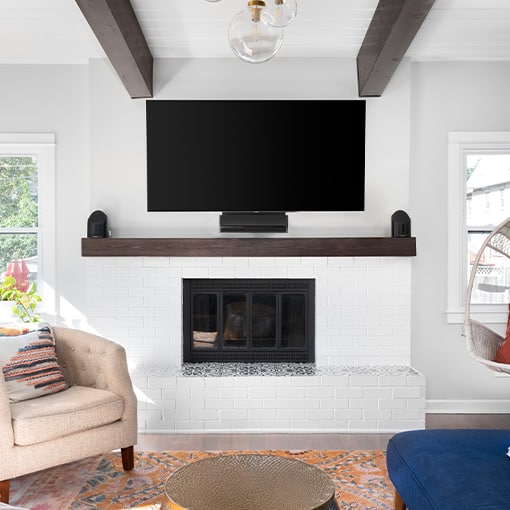
Can I Mount My Tv Above The Fireplace

Everything You Need To Know About Tv Mounts For Fireplaces

Safely Mount A Tv Above An Electric Fireplace Touchstone Home S Inc

3 Myths About Mounting Tvs Over Fireplaces Monmouth County

Should You Mount Your Tv Above A Fireplace Digital Trends Over Ideas Design

Ortal S Innovative Technology Makes It Safe To Mount A Tv Above Your Fireplace

Installing A Tv Above The Fireplace

ᑕ❶ᑐ What To Consider Before Mounting A Tv Above Fireplace

Mounting A Tv Over The Fireplace Common Myths Busted Cepro
Related Posts

